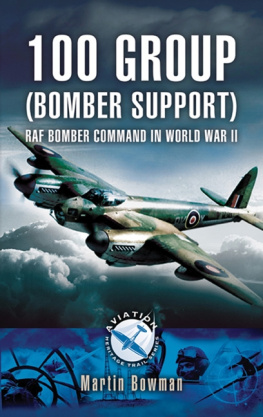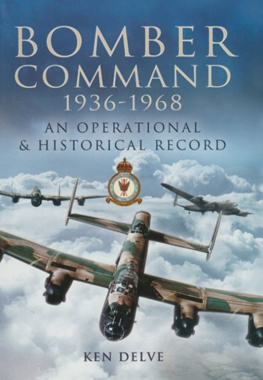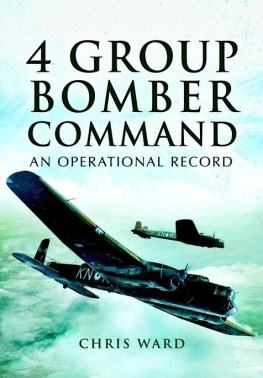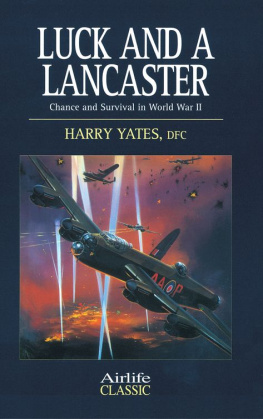
First published in Great Britain in 2014 by
Pen & Sword Aviation
an imprint of
Pen & Sword Books Ltd
47 Church Street
Barnsley
South Yorkshire
S70 2AS
Copyright Chris Ward, 2014
ISBN 978 1 78159 198 7
eISBN 9781473839526
The right of Chris Ward to be identified as Author of this Work has been asserted by him in accordance with the Copyright, Designs and Patents Act 1988.
A CIP catalogue record for this book is available from the British Library.
All rights reserved. No part of this book may be reproduced or transmitted in any form or by any means, electronic or mechanical including photocopying, recording or by any information storage and retrieval system, without permission from the Publisher in writing.
Printed and bound in England by CPI
Pen & Sword Books Ltd incorporates the Imprints of Pen & Sword Aviation, Pen & Sword Maritime, Pen & Sword Military, Wharncliffe Local History, Pen and Sword Select, Pen and Sword Military Classics and Leo Cooper.
For a complete list of Pen & Sword titles please contact:
PEN & SWORD BOOKS LIMITED
47 Church Street, Barnsley, South Yorkshire, S70 2AS, England
E-mail: enquiries@pen-and-sword.co.uk
Website: www.pen-and-sword.co.uk
Foreword and Acknowledgements
As always in my books I have attempted to provide as much detail as possible in the narrative section. There is enough information to produce a full book on each individual squadron, so there is clearly insufficient space in a group setting to make mention of every detail and every loss. Therefore, as in the other books in the series, I have featured particular squadrons as representative of the fortunes of all within the group operating the same aircraft type at the same time.
I would like to register my gratitude to those who have contributed information and or photographs for this book, first and foremost among them the usual suspects, Andreas Wachtel and Steve Smith. I am also indebted to new collaborators, Grzegorz (Greg) Korcz and Greg Harrison. Greg K is a customs officer in Gdansk, in Poland, and is a leading authority on the Polish bomber squadrons. I look forward to further collaborations with him as we work together on the histories of the four Polish bomber units for Pen & Sword. Greg H is a 1 Group researcher of long standing, and the go-to expert on 100 Squadron and the Special Duties Flight.
I also wish to extend my thanks for the help received from Dave Briggs and Martin Nichols of the Fiskerton Airfield Association, Peter Coulter and his colleagues at the 550 Squadron Association, Anne Laws at Wickenby and David Fell, who is always a mine of information on 103 Squadron and Elsham Wolds.
Finally, it is always sad to hear of the passing of one of the unsung heroes who keep the associations going, or look after squadron archives to ensure that we remember the gallant generation of men and women who brought us through the Second World War. Roger Audis of Bardney, a veritable encyclopaedia on 9 Squadron, recently passed away suddenly and unexpectedly. I will miss our telephone conversations, and I offer my condolences to his family.
Chris Ward. Lutterworth. September 2013.
Contents
C HAPTER O NE
In the Beginning
1 Group was born at Abingdon in Oxfordshire on the 1st of May 1936, and replaced the Central Area of the Air Defence of Great Britain. Initially it inherited three stations and ten squadrons, four of the latter, XV, 40, 98 and 104 based at Abingdon, while 18, 21, 34 and 39 Squadrons resided at Bircham Newton and 57 and 218 at Upper Heyford. At the time of its formation 1 Group was equipped with the Hawker Hind, but with expansion to eight stations and seventeen squadrons by late 1938 came Bristol Blenheims and Fairey Battles. As the world headed inexorably towards war in 1939 the Group was reduced to five stations, Abingdon, Harwell, Benson, Bicester and Boscombe Down, each of which housed two of the Groups reduced cadre of ten squadrons equipped exclusively now with their cumbersome Fairey Battles. On the 24th of August, and in accordance with a pre-arranged plan, the group was mobilized in preparation for its departure to France as an advanced air striking force. The move to airfields in the Reims region of France took place on the 2nd of September, at which time Headquarters 1 Group became Headquarters Advanced Air Striking Force.
A new 1 Group was formed on the 12th of September with its headquarters at Benson. The intention was that it would assume command of the Fairey Battle element, now designated 71,72,74,75 and 76 Wings, once the second echelon of formerly 2 Group squadrons had arrived in France to join it. Headquarters Advanced Air Striking Force would then be placed in overall command. At the end of September, however, it was decided to postpone the dispatch of the second echelon, of which Headquarters 1 Group was a part, and the group was subsequently disbanded on the 22nd of December. Strictly speaking, the activities of the former 1 Group squadrons during the Battle for France fall outside of the scope of this work, but the intense experiences of the surviving aircrew prepared them uniquely for what lay ahead, and provided the new 1 Group with a steely core of battle-hardened recruits. For this reason we will look briefly at the experiences of the units destined to be founder members of the newly constituted 1 Group. The experiences of 12 Squadron will stand as representative of all of the Fairey Battle squadrons for the eight-month period dubbed by the Americans as the Phoney War, and the few weeks of insanity that preceded the fall of France and the withdrawal of the shattered remnant to the UK.
Sixteen 12 Squadron aircraft departed Bicester on the 2nd September under the command of S/L Lywood, and took up residence at Berry-au-Bac. Having settled in the squadron mounted its first sorties on the 17th, when F/L Gillman led a three aircraft formation on an afternoon reconnaissance of the frontier and returned without incident. Gillman was one of a number of officers who would survive their time in France, and then enjoy distinguished careers in Bomber Command. Sadly, he would lose his life on operations in May 1943 while in command of the Pathfinders 83 Squadron. W/C Thackray succeeded S/L Lywood as commanding officer on the 28th, and the latter would take command of XV Squadron in December. Thackray had previously commanded 35 Squadron for two years to September 1938. For the remainder of the year activity was restricted to training, army cooperation exercises and occasional leafleting operations. A move was made to Amifontaine on the 8th of December in the midst of what was becoming one of the harshest winters in living memory.
1940
The winter actually seemed to deepen as the new year progressed, and flying was a rare treat as the conditions froze the aircraft to the ground. The first operations for 12 Squadron only took place on the 24th of March, when F/L Simpson and F/O Clancy carried out leafleting and reconnaissance over Germany, and noted some flak activity. A number of night operations followed, but it was not until the German advance on the Low Countries on the 10th of May that the gloves came off and the war began in earnest. Proceedings opened with the Luftwaffe bombing many of the AASF airfields at first light, although Amifontaine was subjected to a strafing rather than bombing attack. It was late afternoon before 12 Squadrons first four sorties were launched, and not one of the Battles survived to fight another day. F/L Simpson was sent to attack troop columns advancing through Luxembourg, and L4949 was shot down by murderous ground fire in the target area. Although the crew survived, F/L Simpson sustained severe burns that would keep him in a French hospital for an extended period. P/O Matthews and crew also came down in the target area in L5190 and were captured, and P/O Hulse dragged his badly damaged L5249 back to base, where it was ultimately abandoned. F/L Hunt force-landed P2243 before making it back to base on foot with his crew.
Next page














